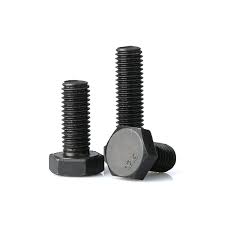Since the steel becomes harder with each subsequent heat treatment, heat treating is done to improve the steel's characteristics. Due to the significant increase in tooth surface strength, the gear strength also improves as a result. different heat treatments are applied depending on how much carbon (C) is present in the steel.
Humanity has been using steel for thousands of years. Around 2000 BC, Anatolia is where iron was first produced, and the iron age was well underway by 1000 BC. Iron technology had advanced as far as Europe could go by 500 BC, and China had it by 400 BC. Small shaft furnaces were used to make early iron, which formed as solid lumps or blooms that were later forged into wrought iron.
Steel turns brittle when its carbon concentration exceeds 0.3%. Egyptians began using heat to lessen this about 900 BC. There is proof that heat-treated steel was being produced in China by the second and first century BC (the Han dynasty.) The Roman Empire contributed to the Western world's expansion of iron and steel manufacturing techniques beyond the borders of Europe and North Africa.
A significant technical advance occurred in the 15th century when air was pumped into bloomery furnaces using waterpower, raising the temperature to up to 1200 oC and producing a liquid iron rich in carbon. This substance, sometimes known as cast iron, served as the foundation for most of the modern era. The iron underwent a carburization procedure to enhance the iron content once again so that steel could be produced.
The manufacturing of the steel that we are all acquainted with today improved significantly throughout the course of the following few centuries. Numerous techniques have been created, including as the Bessemer method, electric steel production, crucibles, and alloy creation by tungsten and manganese addition.
Hardening
Steel with a medium to high carbon content can be toughened by heat treatment. Steel can be heated to certain temperatures (780 oC to 850 oC), depending on the amount of carbon present, and then swiftly cooled by being quenched in oil or water. The temperature required to harden metal decreases as carbon concentration increases. The “austenitic crystal phase” is a term used to describe this temperature.
The metal's crystal structures are changed during this process, resulting in cementite (also known as iron carbide), a hard, brittle substance that is categorised as ceramic in its purest form. Cementite is composed of 93.3% iron and 6.67 percent carbon and has an orthorhombic crystal structure.
Annealing
Heat is used to modify the grain structure of a metal during annealing, which results in the metal being softer and more ductile. The steel is heated throughout this procedure to a temperature slightly over its re-crystallization point, enabling it to cool gradually. The metal is allowed to cool in the furnace itself throughout a full anneal.
Normalising
The tensions in the grain structure can be eliminated by heating the metal to a temperature greater than that required for annealing and letting it cool naturally. Steel can be made more stable by normalising it, and the metal can then be processed in various ways.
Quenching
Quenching is the quick cooling of heated metal with the use of oil or water. The steel becomes hard yet brittle when this sets it. In order to make steel sturdy enough to sustain buildings, bridges, and any other construction it may be utilised in, it is heated and quenched multiple times.
When heat treating steel, annealing, quenching, and tempering are typically employed.






